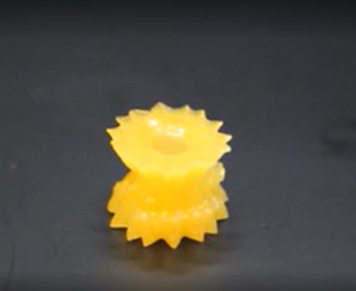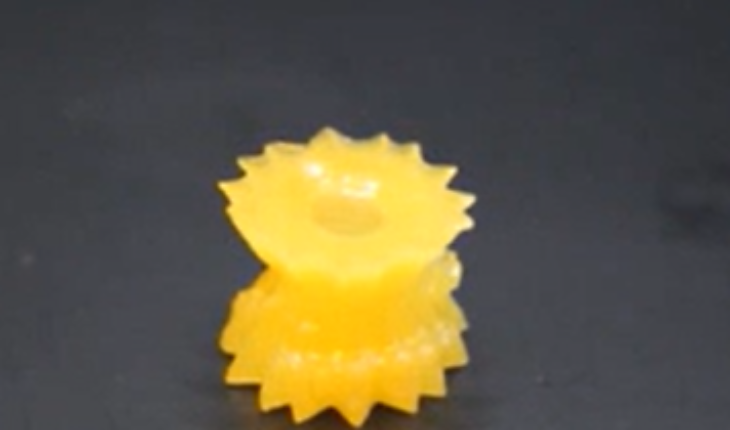
OSU College of Engineering unveils liquid crystalline elastomer structures that can crawl, fold and snap directly after printing.
Shape-changing materials and 3D printing go together like peanut butter and jam or mayonnaise in grilled cheese (seriously, try it). From shape memory polymers and reactive 4D printing to smart fabrics and reconfigurable antennas, the cutting edge of additive materials is most definitely squishy.
The latest example comes from Oregon State University, where engineers have devised a new method for 3D printing liquid crystalline elastomers (LCEs), which can crawl, fold and snap directly after printing.
“LCEs are basically soft motors,” explained Devin Roach, assistant professor of mechanical engineering, in a press release. “Since they’re soft, unlike regular motors, they work great with our inherently soft bodies. So they can be used as implantable medical devices, for example, to deliver drugs at targeted locations, as stents for procedures in target areas, or as urethral implants that help with incontinence.”
Liquid crystalline elastomers are lightly crosslinked polymer networks that can change shape upon exposure to certain stimuli, such as heat. Since they can thermal energy, such as from the sun or alternating currents, into mechanical energy that can be stored and used on demand, LCEs are also ideal for soft robotics.
“Flexible robots incorporating LCEs could explore areas that are unsafe or unfit for humans to go,” Roach said. “They have also been shown to have promise in aerospace as actuators for automated systems such as those for deep space grappling, radar deployment or extraterrestrial exploration.”
The shape-changing properties of LCEs depend on the alignment of molecules within the materials. Roach and collaborators at Harvard University, the University of Colorado, and Sandia and Lawrence Livermore national laboratories discovered a way to align the molecules using a magnetic field during digital light processing.
“Aligning the molecules is the key to unlocking the LCEs’ full potential and enabling their use in advanced, functional applications,” Roach said.
Roach and the other researchers varied the strength of the magnetic field and studied how it and other factors, such as the thickness of each printed layer, affected molecular alignment. This enabled them to print complicated liquid crystalline elastomer shapes that change in specific ways when heated.
“Our work opens up new possibilities for creating advanced materials that respond to stimuli in useful manners, potentially leading to innovations in multiple fields,” Roach said.
The research is published in the journal Advanced Materials.
One other, more immediate application of LCEs is in mechanical dampening. OSU students Adam Bischoff, Carter Bawcutt and Maksim Sorkin and the other researchers demonstrated that using direct ink write 3D printing can produce mechanical damping devices that effectively dissipate energy across a wide range of loading rates.
The dampening applications of LSEs are discussed in a paper published in the journal Advanced Engineering Materials.





